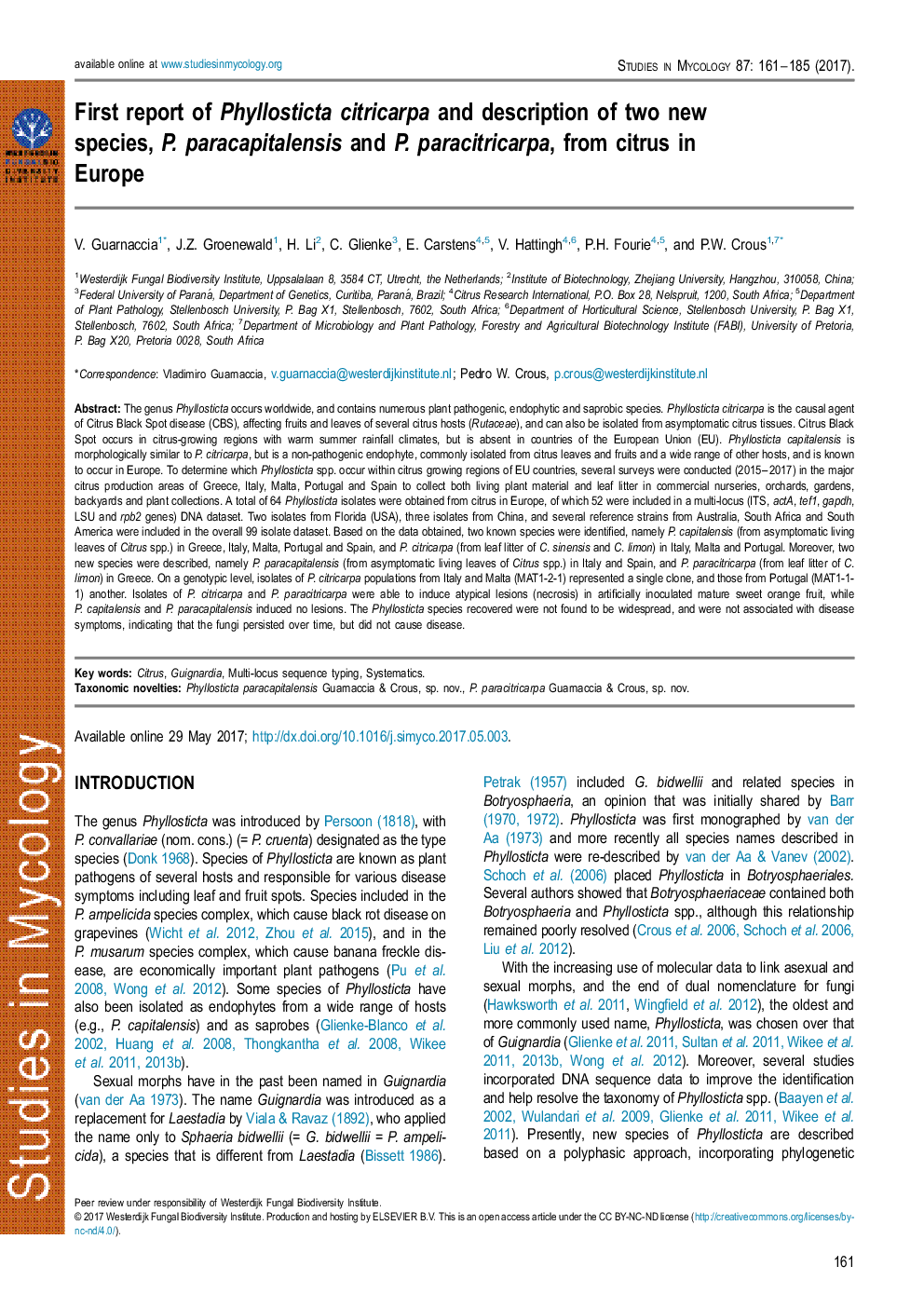| کد مقاله | کد نشریه | سال انتشار | مقاله انگلیسی | نسخه تمام متن |
|---|---|---|---|---|
| 5740992 | 1616933 | 2017 | 25 صفحه PDF | دانلود رایگان |

The genus Phyllosticta occurs worldwide, and contains numerous plant pathogenic, endophytic and saprobic species. Phyllosticta citricarpa is the causal agent of Citrus Black Spot disease (CBS), affecting fruits and leaves of several citrus hosts (Rutaceae), and can also be isolated from asymptomatic citrus tissues. Citrus Black Spot occurs in citrus-growing regions with warm summer rainfall climates, but is absent in countries of the European Union (EU). Phyllosticta capitalensis is morphologically similar to P. citricarpa, but is a non-pathogenic endophyte, commonly isolated from citrus leaves and fruits and a wide range of other hosts, and is known to occur in Europe. To determine which Phyllosticta spp. occur within citrus growing regions of EU countries, several surveys were conducted (2015-2017) in the major citrus production areas of Greece, Italy, Malta, Portugal and Spain to collect both living plant material and leaf litter in commercial nurseries, orchards, gardens, backyards and plant collections. A total of 64 Phyllosticta isolates were obtained from citrus in Europe, of which 52 were included in a multi-locus (ITS, actA, tef1, gapdh, LSU and rpb2 genes) DNA dataset. Two isolates from Florida (USA), three isolates from China, and several reference strains from Australia, South Africa and South America were included in the overall 99 isolate dataset. Based on the data obtained, two known species were identified, namely P. capitalensis (from asymptomatic living leaves of Citrus spp.) in Greece, Italy, Malta, Portugal and Spain, and P. citricarpa (from leaf litter of C. sinensis and C. limon) in Italy, Malta and Portugal. Moreover, two new species were described, namely P. paracapitalensis (from asymptomatic living leaves of Citrus spp.) in Italy and Spain, and P. paracitricarpa (from leaf litter of C. limon) in Greece. On a genotypic level, isolates of P. citricarpa populations from Italy and Malta (MAT1-2-1) represented a single clone, and those from Portugal (MAT1-1-1) another. Isolates of P. citricarpa and P. paracitricarpa were able to induce atypical lesions (necrosis) in artificially inoculated mature sweet orange fruit, while P. capitalensis and P. paracapitalensis induced no lesions. The Phyllosticta species recovered were not found to be widespread, and were not associated with disease symptoms, indicating that the fungi persisted over time, but did not cause disease.
Journal: Studies in Mycology - Volume 87, June 2017, Pages 161-185